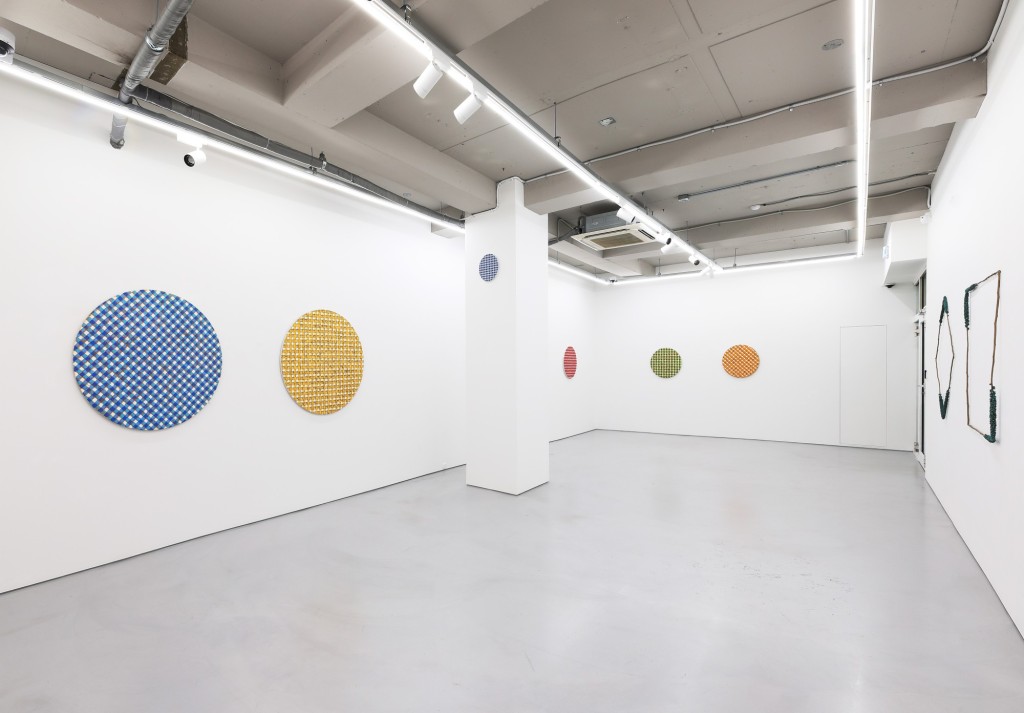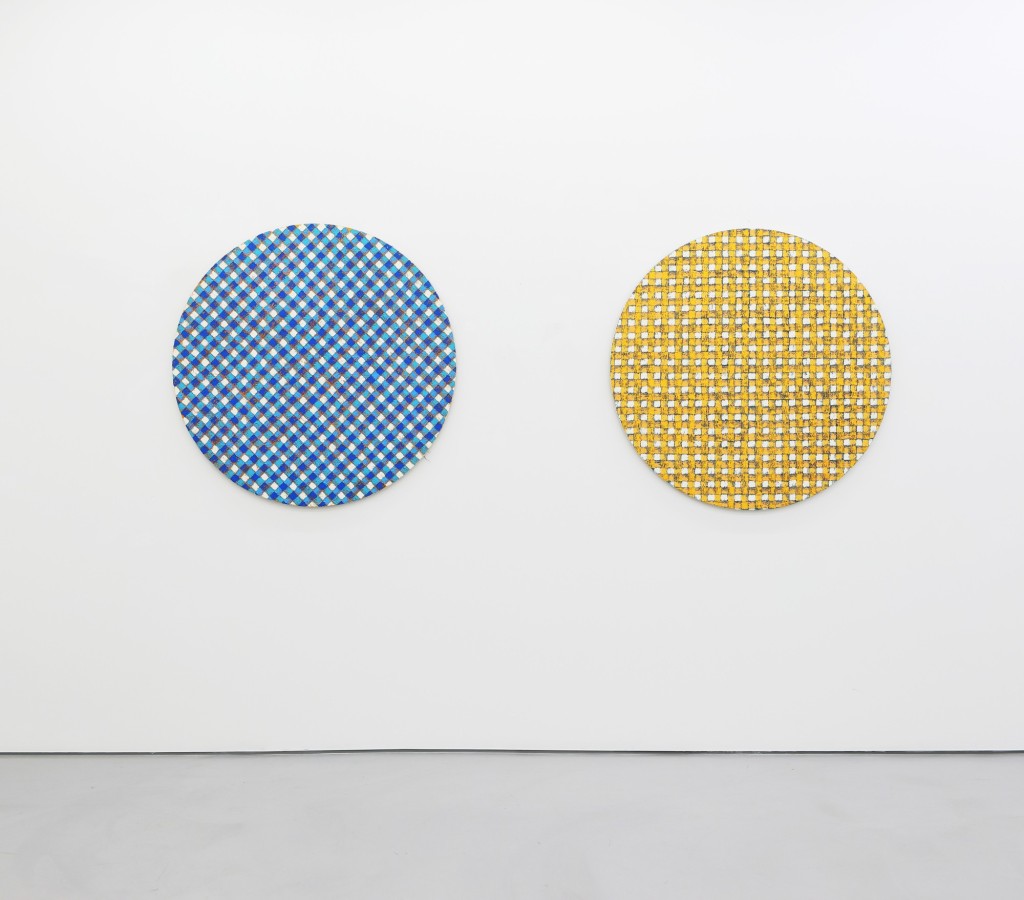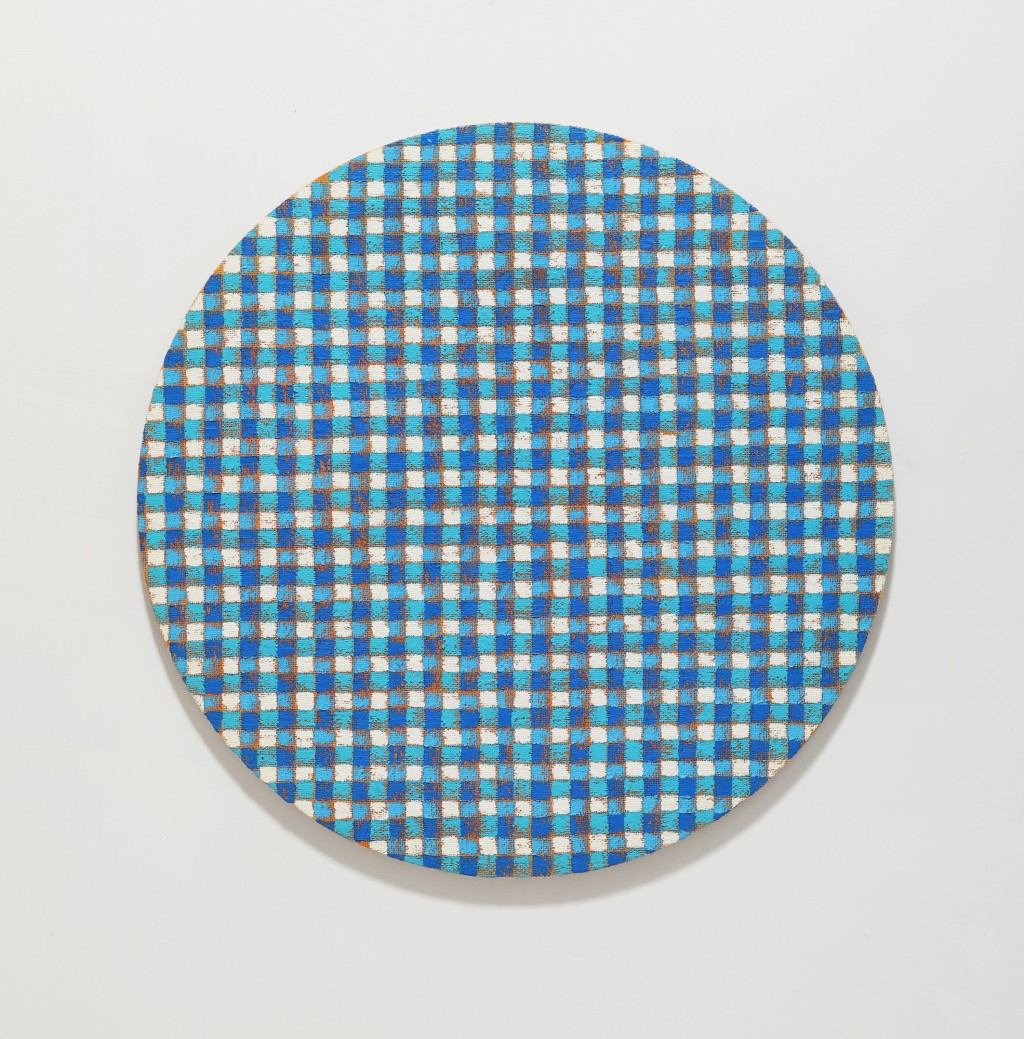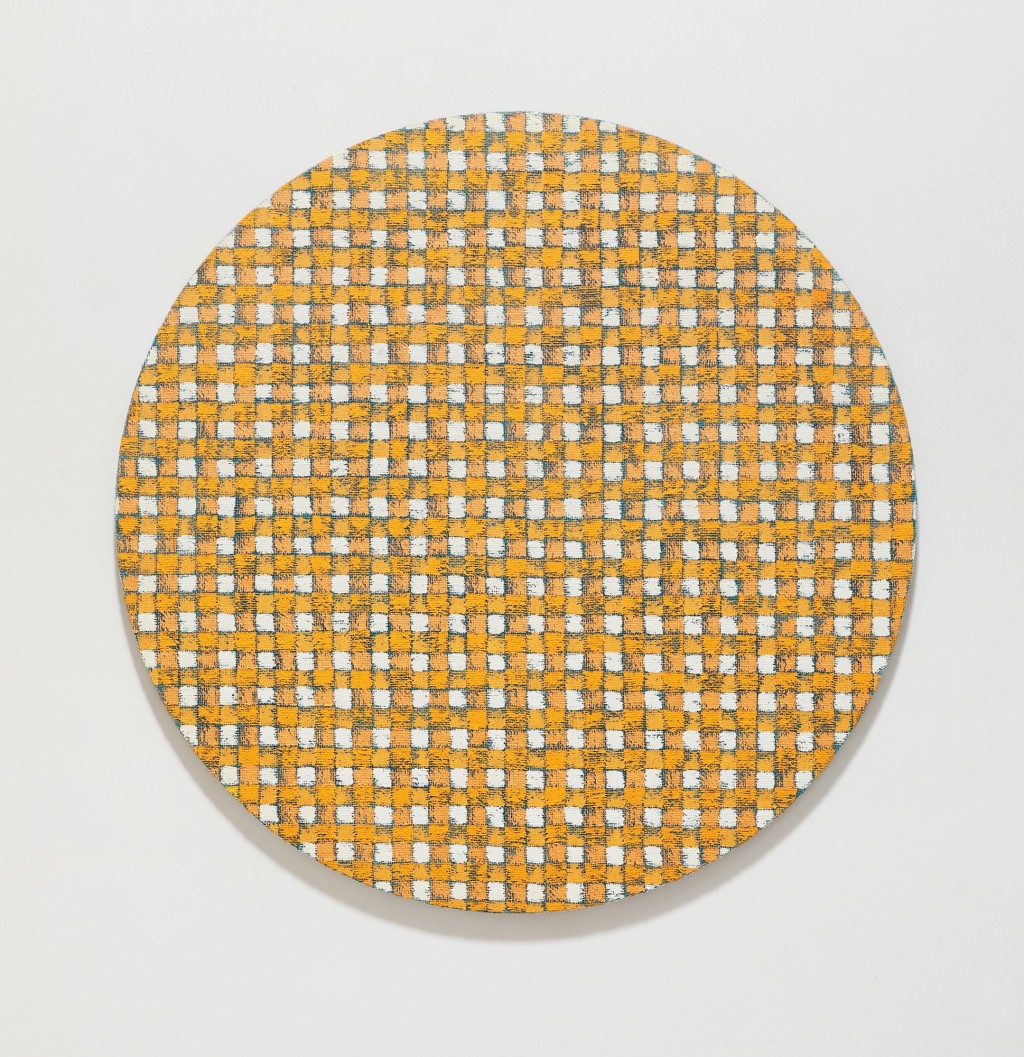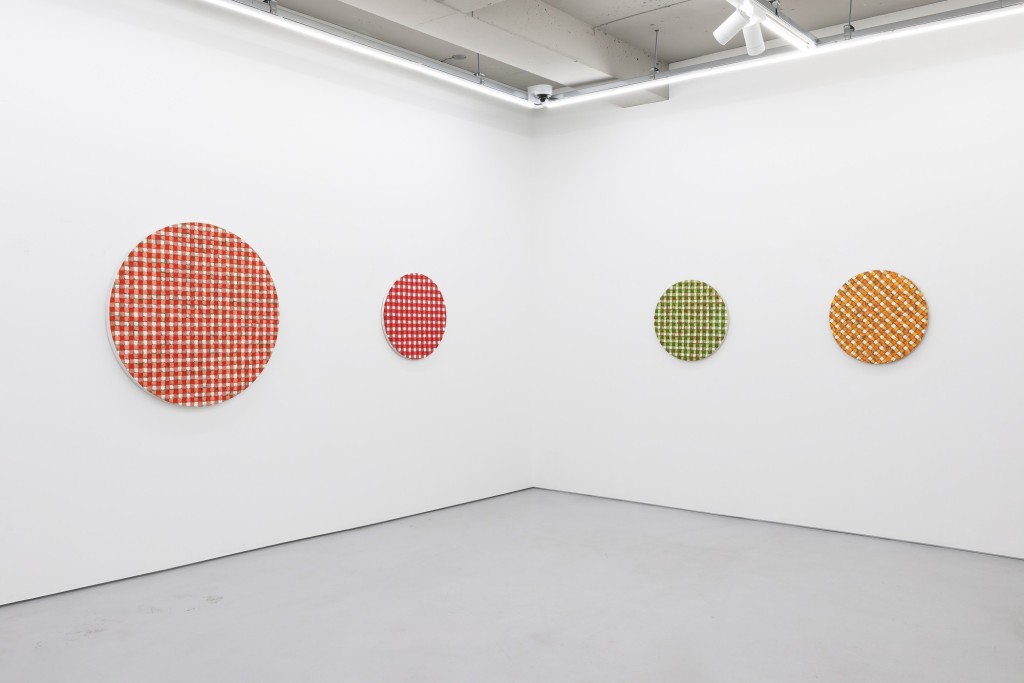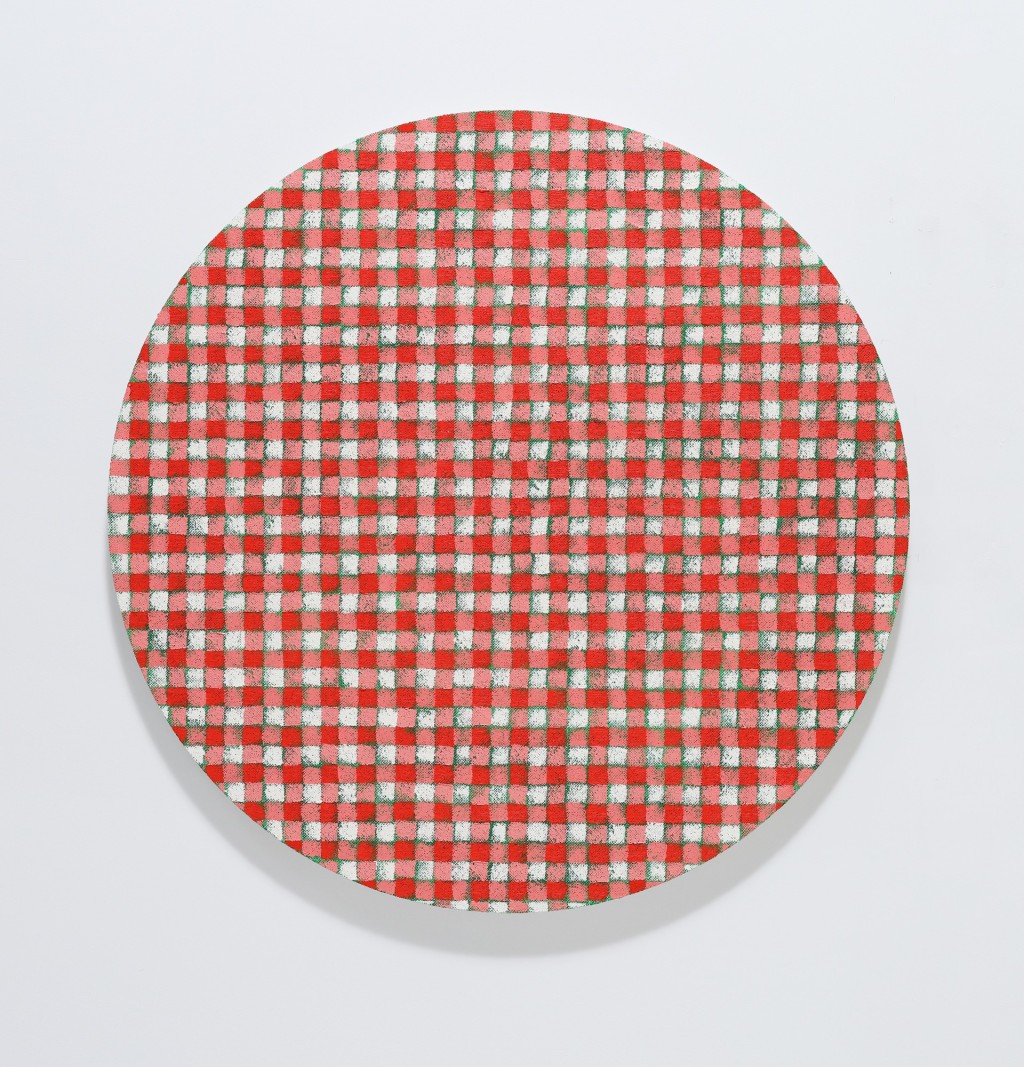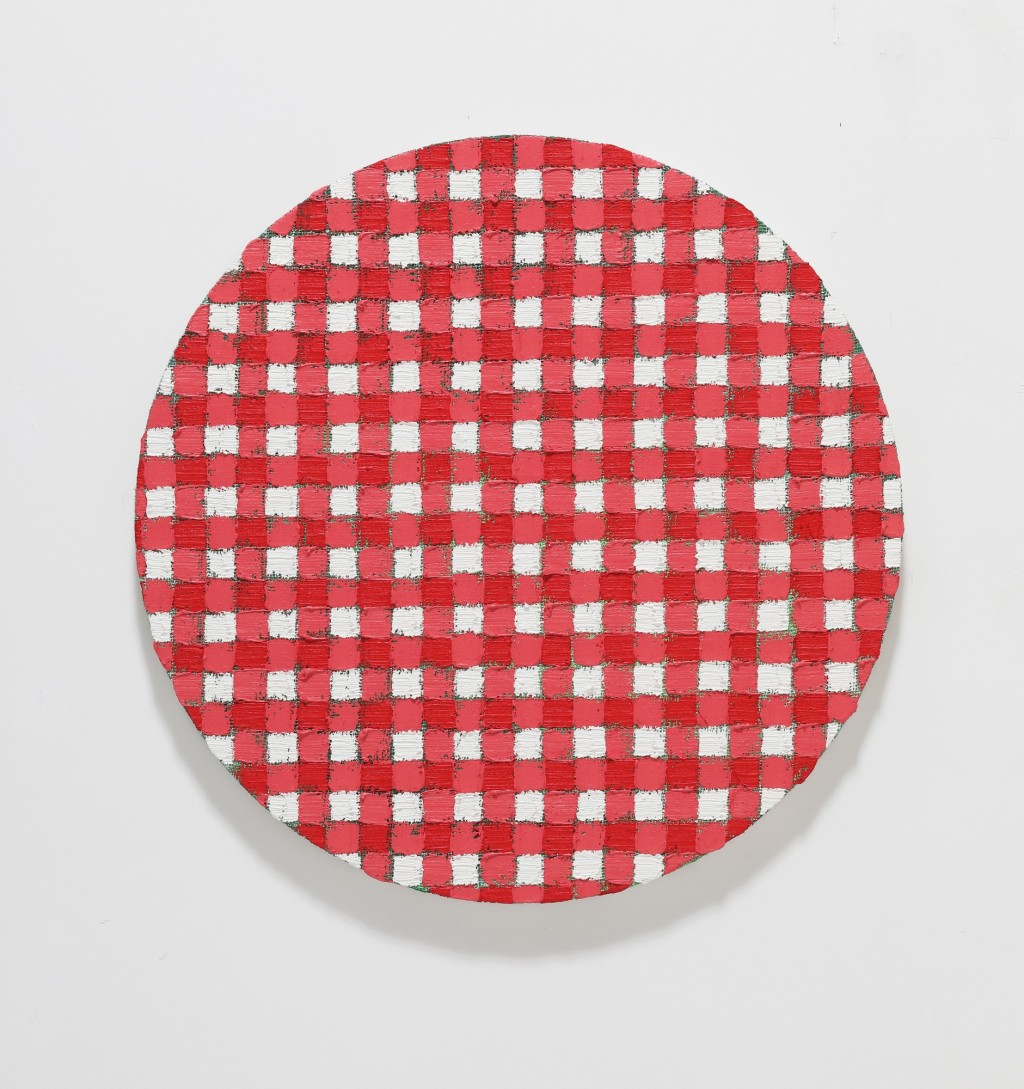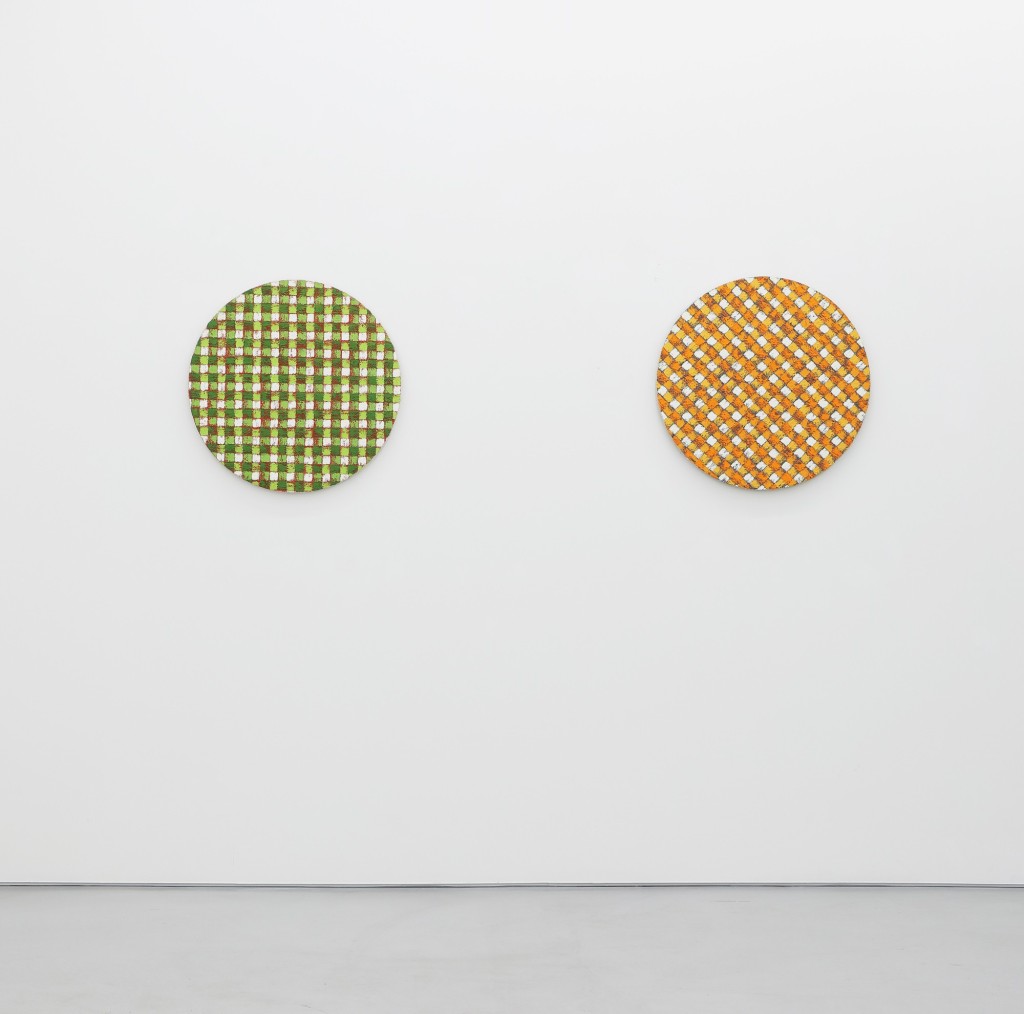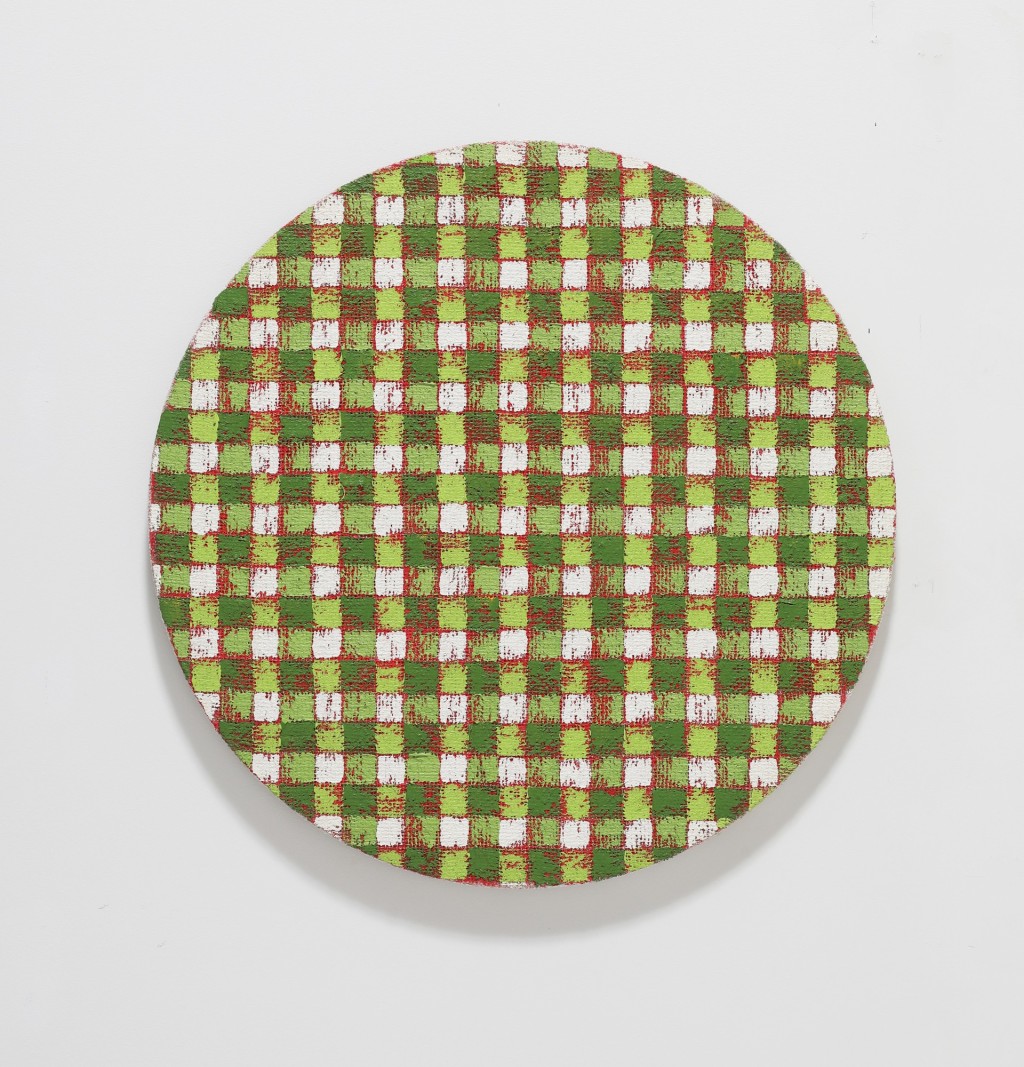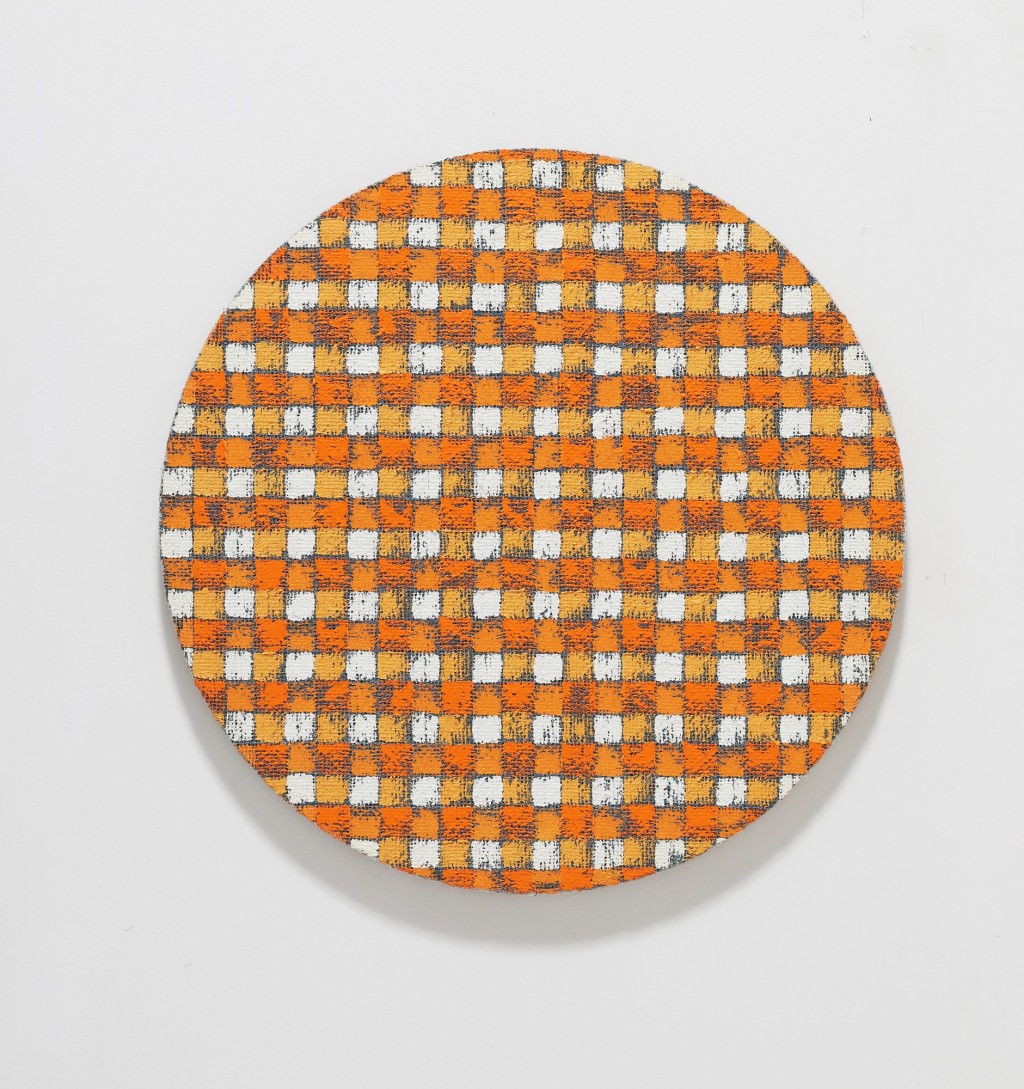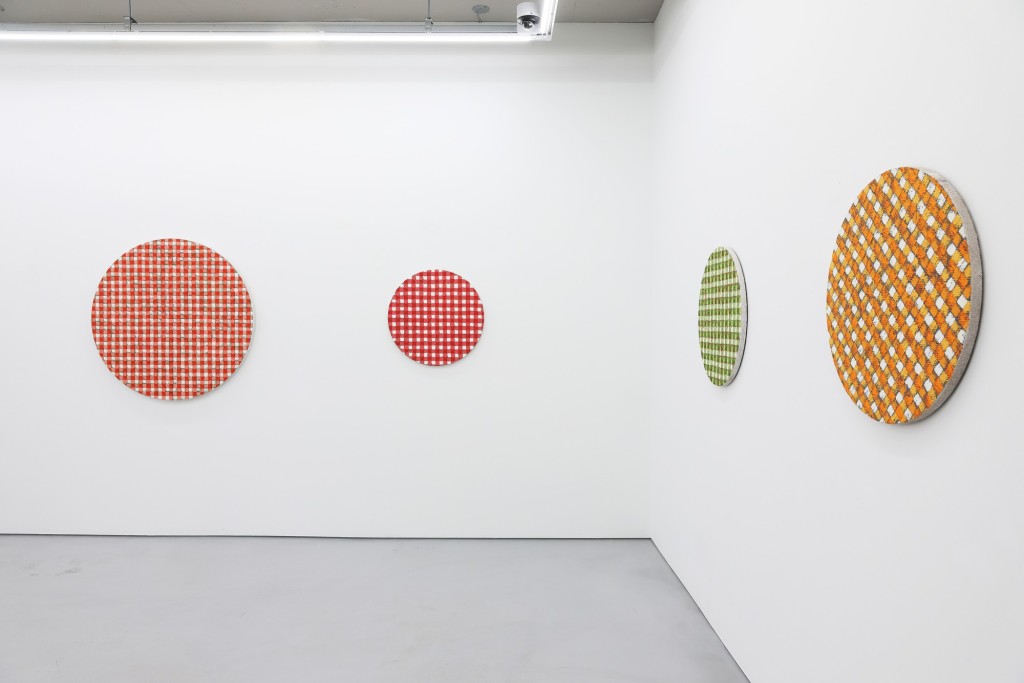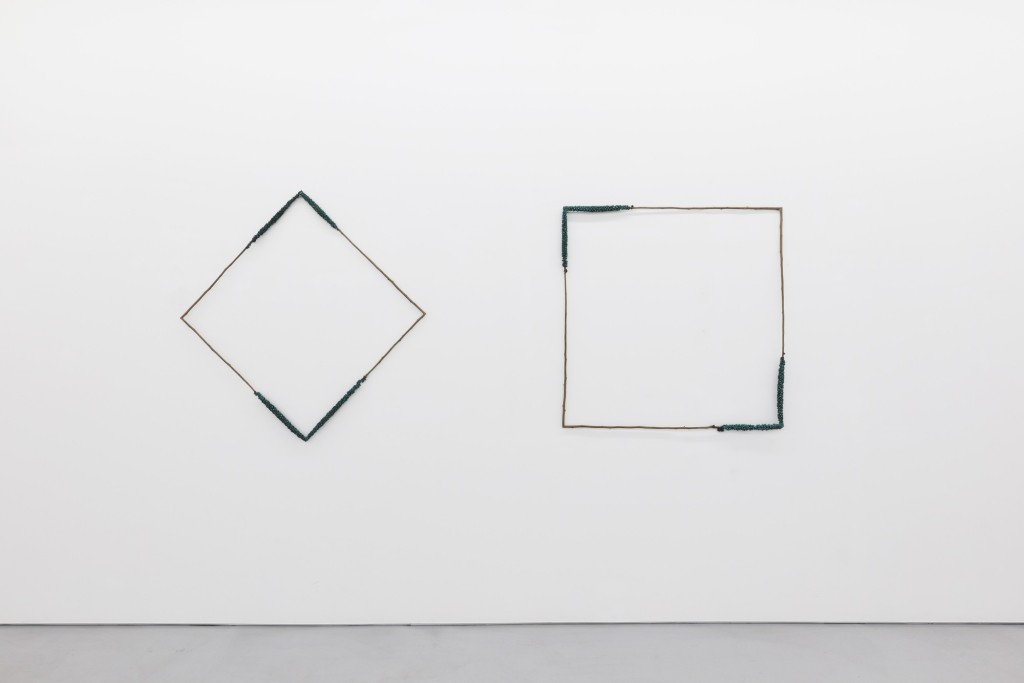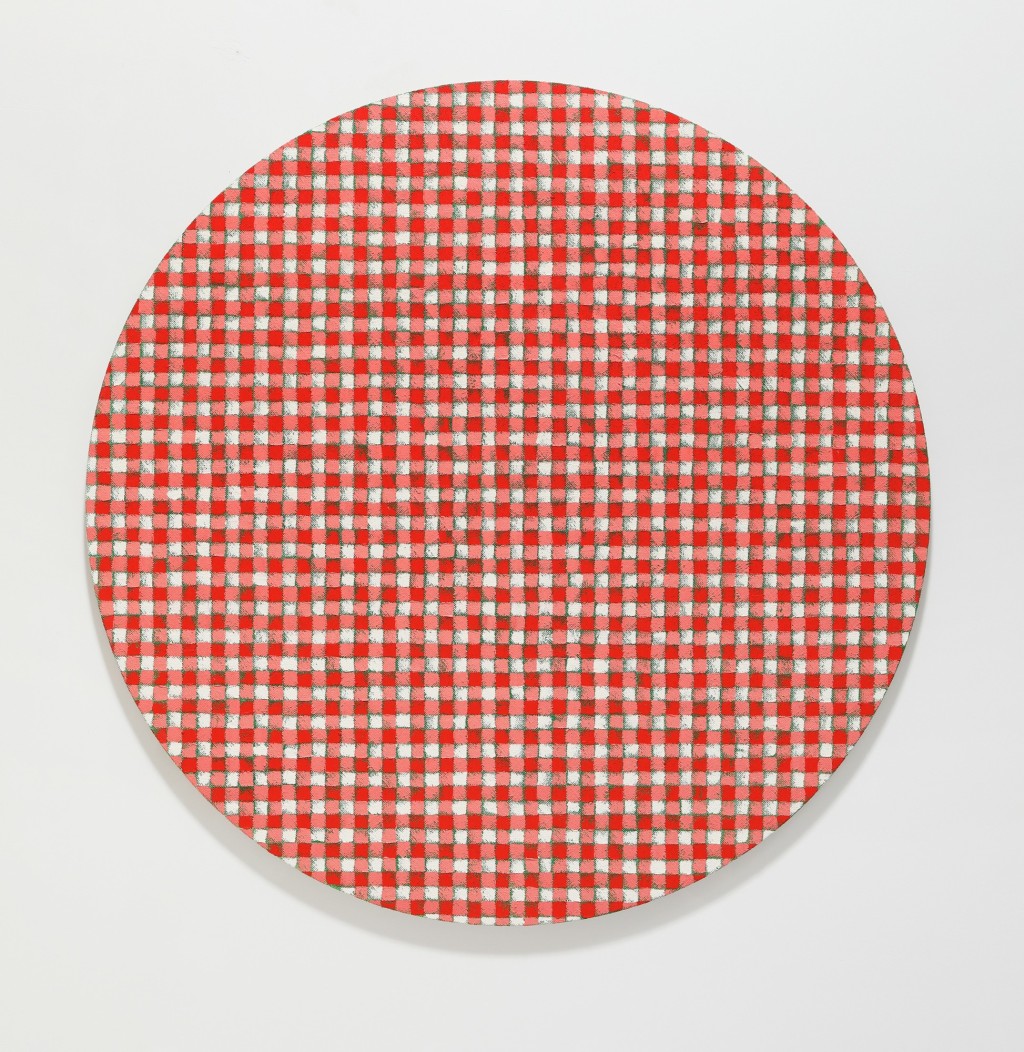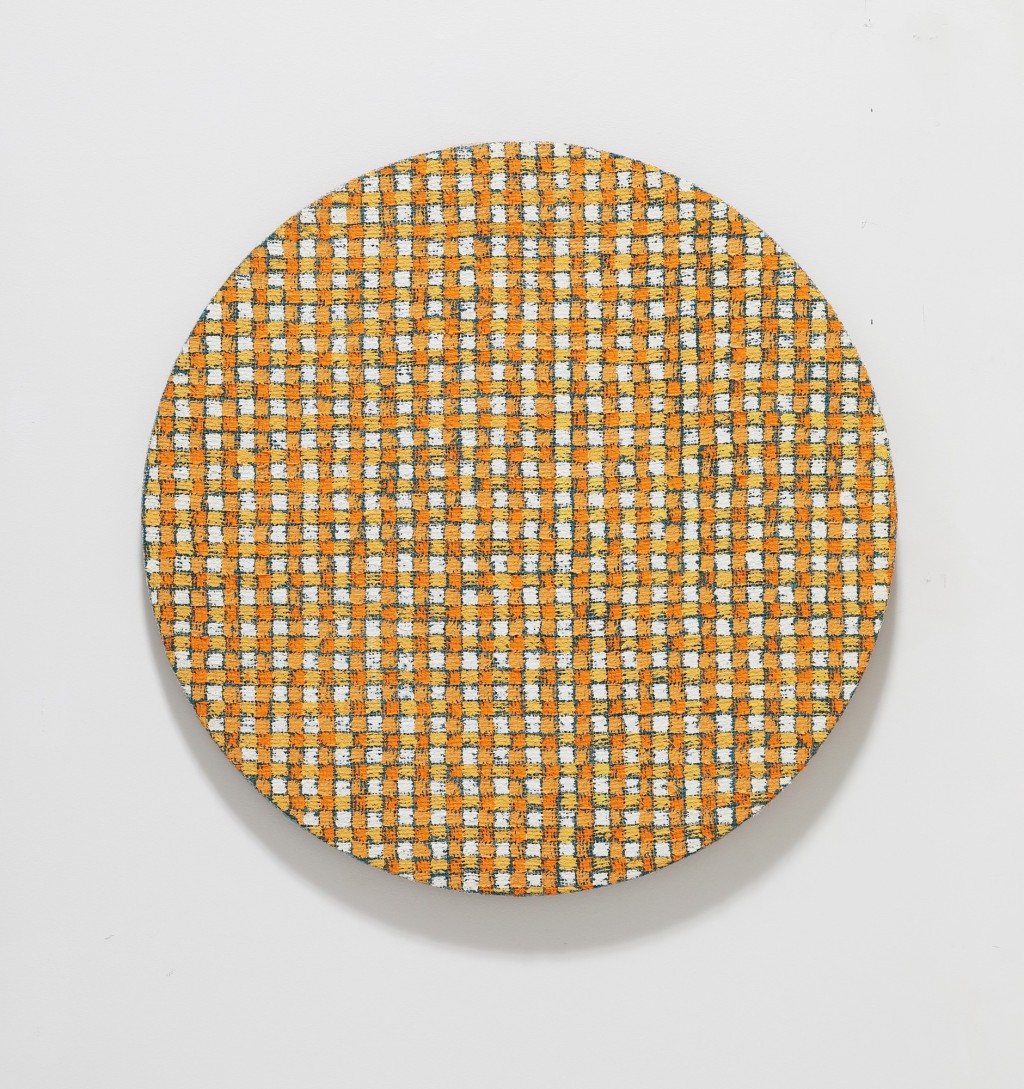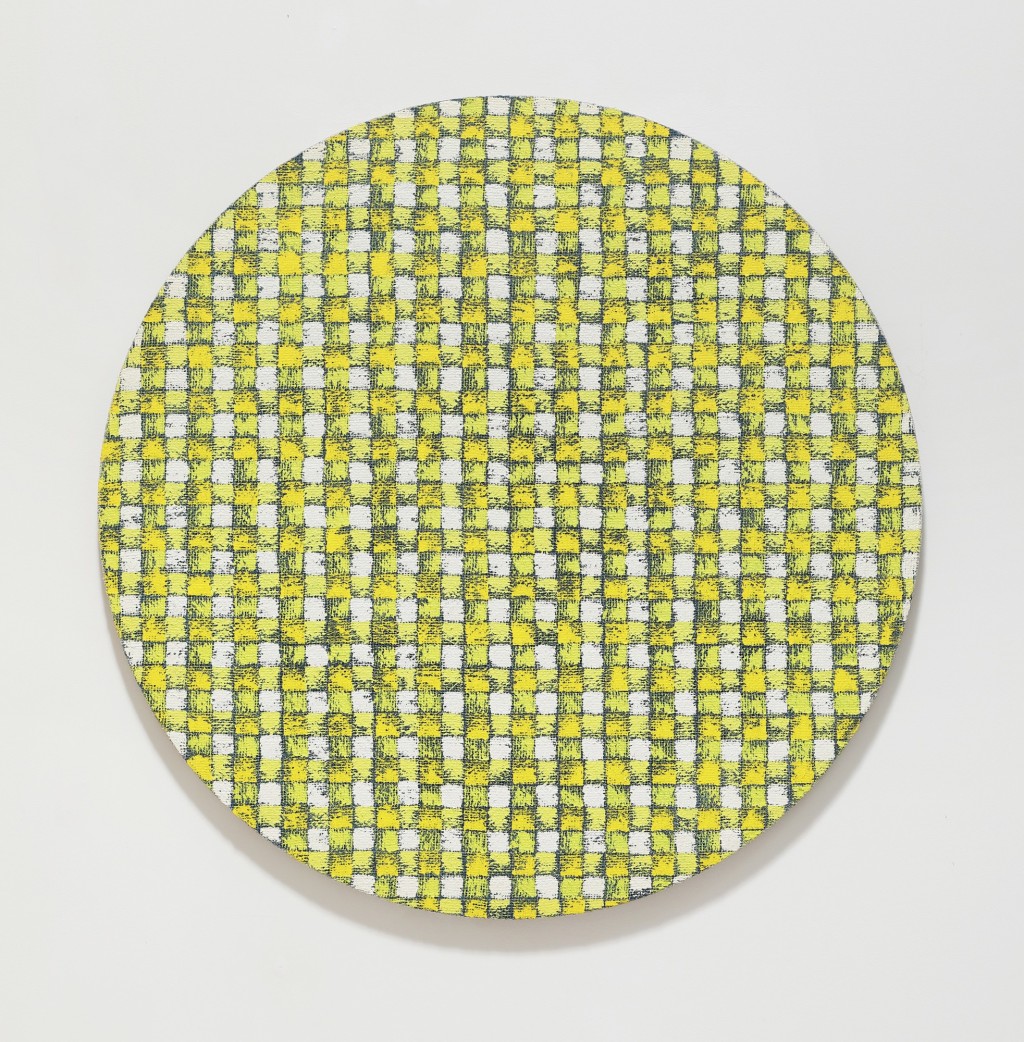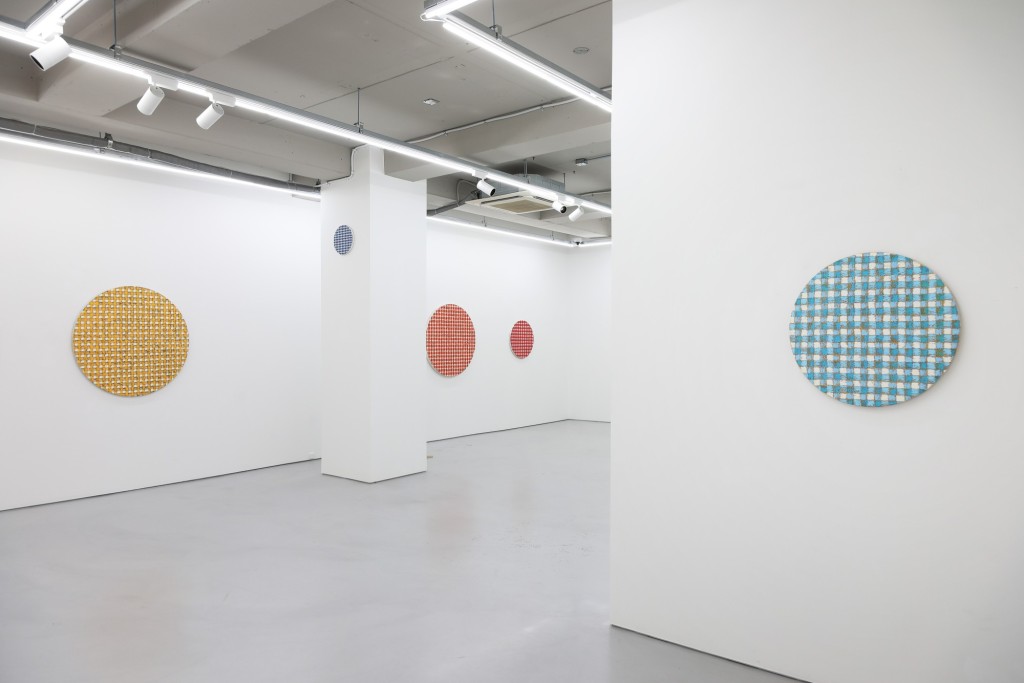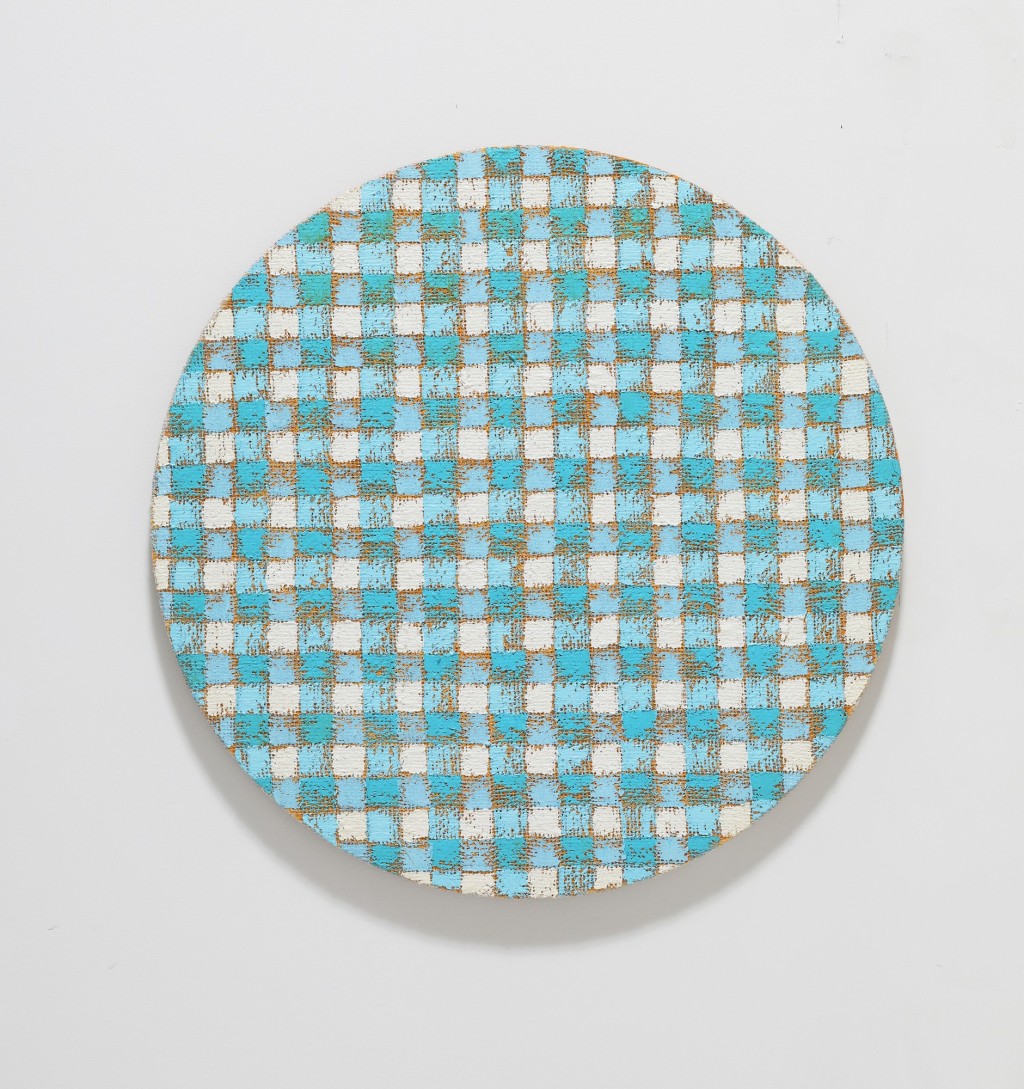The gingham plaid cotton fabric seemingly settled into a common shape in our eyes. One artist has given it a new evolution. American conceptual artist Michelle Grabner has spent more than 30 years reading the codes that reveal the power structures of society in the dense, cosy objects that dot our homes, translating them into abstract paintings. It was in her studio, where she was often deep in meditation, that she noticed a plaid pattern on a tablecloth.
In the history of women, only the aristocracy wore embroidered clothes. After the industrialisation of England in the 18th century, ordinary women were able to wear plaid house dresses, gaining the right to be beautiful and freeing themselves from hand-sewing labour. It was a new world, a "gingham world”. Widely used across social classes, this cotton fabric became a household staple, especially in 19th-century America, and is ubiquitous today. Its simple but familiar plaid pattern has helped to reassure people during times of turmoil, including the stock market crash, the Vietnam War, and the dissolution of the Soviet Union.
Fascinated by gingham's ability to capture not only women's labour productivity but also their need for embellishment and reassurance, Grabner delicately transferred it onto burlap rather than canvas. A few strands of the coarse yarn were pulled out to form a pattern and the gaps were filled in with colour, and rather than confining the work to a standard square frame, the artist used panels of rhombuses and circles.
Grabner’s long-standing series of circular paintings was inspired by the tondo, a decorative art form popularised during the Renaissance from the 14th to 16th centuries, especially in Italy. Tondos are ancient round paintings or reliefs, often depicting the Virgin Mary and Jesus. Such trays and medallions were used as gifts to celebrate the birth of babies and as decorative objects for the home, and like the textile objects, they, too, lend themselves to generalised ideas about women's traditional roles. However, Grabner applied tondo's craft elements to the circular paintings, drawing spiderweb-like radial radiations and Archimedes spirals that wind at regular intervals from an off-center point, and placed a small chair, a photograph, and a square painting on the back to create a new perception of space and artistic language.
In this solo exhibition at Efremidis, Grabner presents eighteen new paintings of circular shapes that, for the first time, depict a grid rather than a radial or spiral pattern. This new approach is inspired by the late impressionist painter Pierre Bonnard's paintings of domestic scenes, in which a red check tablecloth covers a round table with antique crockery, vases, and an abundance of fruit. Vivid reds, whites, and deep, pale pinks stand out in the circular painting, which is hung on the white walls of the exhibition space like the dining table in the painting.
The works depict a world where history repeats itself, where social phenomena and individual lives are intertwined in a grid along physical time, linking past, present, and predictable future. The space concealed by these entanglements is a fantasy world beyond the real, where patterns that appear to be the same but differ slightly in colour and texture create a sense of an unknown force as the myriad weft and warp threads that make up the pattern slowly repeat and spread, unperturbed by faltering or sudden interruptions. And the endless repetition of a beautiful melody, as if the artist had added a cadence somewhere, seems to invite the viewer to enter a world of contemplation and create their own artistic language to express their feelings.
Born in the United States and raised as an artist and educator, Grabner works as a critic, drawing on art history filtered through her personal sensibilities. In 2014, she co-curated the Whitney Biennial, and with her husband Brad Killam, she runs a nonprofit cultural space that engages with the community.

